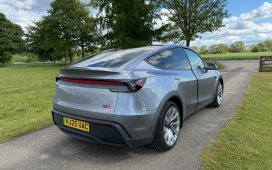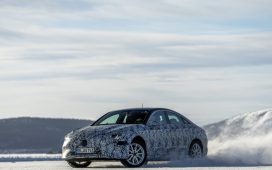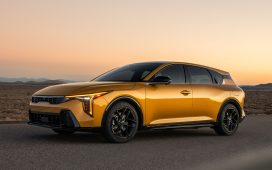Filby Photography/Alamy Stock Photo
With green vehicles becoming more affordable, adoption is at full throttle, despite some recent speed bumps. So, which nations boast the largest share on the road? In an ironic twist, the number one country just happens to be a massive oil producer, while the world’s biggest carbon emitter is in the top five.
Read on to discover the top 25 countries leading the way with the largest share of electric vehicles currently on the road, based on data from the International Energy Agency’s (IEA) Global EV Outlook 2025.
imageBROKER/Alamy
The IEA’s 2025 Outlook paints a picture of a rapidly accelerating global shift toward electric mobility – 3.5 million more cars sold in 2024 compared to the previous year. To put the momentum into perspective, the number of additional EVs sold last year on its own surpassed the total number purchased worldwide in 2020.
China, the world’s biggest EV market, continues to go from strength to strength. Over in Europe, electric car sales plateaued last year as subsidies and other support schemes ended. Yet the continent remains a leader in EV adoption. While the US is playing catch-up, it saw sales rise by 10%. However, emerging markets in Asia and Latin America truly stole the show, with a remarkable 60% year-on-year increase.
skypiercerr/Shutterstock
Looking ahead, the EV revolution shows no signs of slowing down, with more than one in four cars sold this year set to be electric. This is in spite of uncertainties surrounding global economic growth, trade, and industrial policies. It will all come down to money in the end, as falling prices speed up mainstream adoption.
In just five years, electric cars are expected to make up 40% of new car sales, and you’ll no doubt notice many more out and about on the road. But which countries have the biggest share of electric cars on their roads right now…
Sean Gallup/Getty Images
The number of electric cars in Poland has mushroomed by 1,058% since 2020, when it stood at just 0.1% of the total. While this growth figure is pretty jaw-dropping, Poland’s share is below the global average of 4.5% and Europe’s mean of 4.7%.
Expanding the nation’s charging infrastructure is key to accelerating further EV adoption. For instance, in many European countries, 90% of the motorway network has a charging point every 30 miles (50km), but it’s less than 80% in Poland. That said, the EU is planning to ban the sale of new internal combustion engine (ICE) cars by 2035, which is turbo-charging EV infrastructure and adoption throughout the bloc, including in Poland.






